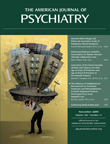Patients and Text Messaging: A Boundary Issue
To the Editor: The present vignette is of a novel type of doctor-patient communication: text messaging. The clinical implications of this form of nontraditional contact are explored and an approach to patient text messaging is provided.
“Dr. D” is a psychiatrist in private practice. She has treated a patient named “Ann,” a woman with borderline personality disorder, for more than 1 year. Ann’s condition has recently worsened. After their latest session, Dr. D received a text message on her cell phone from Ann stating that the session was “useless” and that she feels worse. Unsure of how to respond and, if so, in what way, Dr D. decides she will address the issue at their next meeting.
Text messaging is the term for the near instantaneous transmission of short, written messages of text from one cellular phone to another. The past decade has witnessed an exponential increase in its use, with an estimated 2.5 trillion text messages sent in 2008 (1) . Nevertheless, many psychiatrists find themselves either unfamiliar with text messaging as a means of communication or unaccustomed to its use in clinical practice.
Heretofore, text messaging has been described in the literature in one of the following three ways: as a method to facilitate administrative tasks, such as patient appointment reminders (2) ; as an example of a technological psychopathology (when overused) (3) ; and as a means to improve certain healthcare interventions, such as smoking cessation (4) .
The present vignette describes the clinical situation of receiving a text message from a patient. In such instances, it is important to attend to both the content of the text message and the process of text messaging. Although on the surface, the patient’s message appears to be merely a statement of frustration with a recent session, her texting has even more significant dynamic implications. Given her difficulty with object constancy and boundaries, texting allows her to remain intimately connected to her therapist in a concrete way, much like a transitional object, while simultaneously permitting expression of her aggression in an indirect fashion. Like all sorts of between-session encounters, the meaning of the patient’s texting ultimately needs to be understood through expressive therapy.
I approach patient text messaging similarly to other boundary issues and respond to an initial text by confirming my availability and expressing my interest, while concurrently stating the parameters of treatment. Thus, I respond to an initial text message with a phone call, informing the patient that I have received his or her message, that I wish to discuss it further with him or her in our next scheduled session, that I will read but not respond to future texts, and that he or she will need to call, not text, me if anything emergent occurs.
1. Stross R: What carriers aren’t eager to tell you about texting. New York Times, Dec 28, 2008Google Scholar
2. Dyer O: Patients will be reminded of appointments by text messages. BMJ 2003; 326:1281Google Scholar
3. Block J: Issues for DSM-V: internet addiction. Am J Psychiatry 2008; 165:306–307Google Scholar
4. Krishna S, Boren SA, Balas EA: Healthcare via cell phones: a systematic review. Telemed J E Health 2009; 3:231–240Google Scholar



